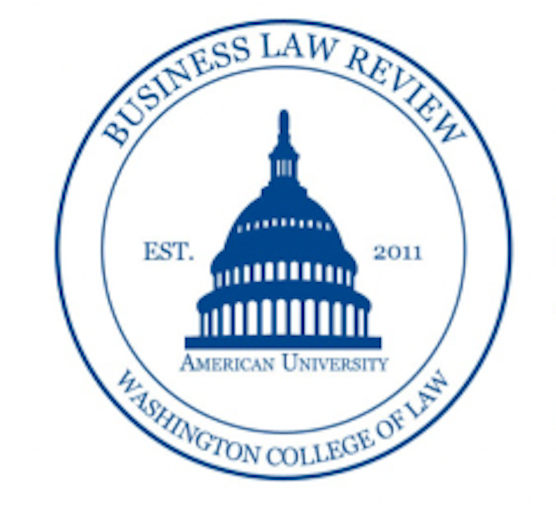By: Alex Mcleod
On September 30, 2015, the Ninth Circuit decided that the National Collegiate Athletic Association’s (NCAA) amateurism rules for student-athletes are pro-competitive and subject to antitrust scrutiny under the Rule of Reason.[1] In O’Bannon v. NCAA, the Court decided to allow members of the NCAA to give scholarships for the full cost of attendance to student-athletes, but not to allow student-athletes to receive cash compensation for their names, images, or likeness (NILs) as student-athletes to maintain the historical amateur preservation of collegiate sports.
In 2008, Ed O’Bannon a former All-American UCLA basketball player was at a friend’s house where he discovered that Electronic Arts (EA) produced a video game based on college football and men’s basketball from the late 1990s until 2013. O’Bannon saw an avatar[2] of himself that played for UCLA and wore his jersey number 31. O’Bannon had never consented to the use of his likeness in the videogame and he had never been compensated for his image. In 2009, O’Bannon sued the NCAA and the Collegiate Licensing Company (CLC) alleging that the NCAA’s amateur rules prevented student-athletes from being compensated for the use of their NILs and was an illegal restraint of trade under Section 1 of the Sherman Act.[3]
The district court agreed with O’Bannon, finding the prohibition of student-athletes receiving compensation for their NILs as a violation of Section 1 of the Sherman Act.[4] The lower court held that FSB and Division One schools should (1) allow the awarding of stipends to student-athletes up to the full cost of attendance making up for any “shortfall” in their grants-in-aid and (2) permitting schools to hold a portion of their licensing revenue in trust, to be distributed to student-athletes in equal shares after they leave college.
When the O’Bannon case reached the Ninth Circuit, the Court agreed that the Rule of Reason should be used for evaluating the antitrust claim. When identifying the anticompetitive effects, the Ninth Circuit found that the amateur rules were considered necessary because college football and basketball are “industr[ies] in which horizontal restraints on competition are essential if the product is to be available at all.”[5] The Ninth Circuit rejected the NCAA arguments that the Sherman Act did not apply to the NCAA amateur rule. The court found that the licensing of NILs is commercial activity[6] and that commerce is being conducted when a college athlete exchanges his labor and NIL rights for a scholarship at a Division One school because it is undeniable that both parties are receiving economic gains.[7] While the Ninth Circuit recognizes the NCAA’s pro competitive incentives: (1) preserving the “amateurism” in college sports to keep the consumer demand for college sports[8] and (2) integrating academics and athletics into the college environment to not separate student-athletes from their peers. The Court still agreed with the lower court that Division One schools should provide stipends for full cost of attendance. However, to preserve the amateur history of collegiate sports the Ninth Circuit rejected the district court’s findings that student-athletes should receive compensation for the NILs after leaving college because this would leave consumers to question why student-athletes are being paid and because the NCAA has now outlawed the use of NILs of student-athletes for commercial use until future notice.
Chief Judge Thomas in his partially dissenting opinion agreed with the district court that there should be a portion of their licensing revenue in trust, to be distributed to student-athletes in equal shares after they leave college. The dissent references several accounts of testimony from the NCAA representatives that state that a small stipend would not adversely impact the “amateur” rules of the game and would allow student-athletes to gain a portion of the earnings that they deserve.[9]
The business impact of this case allows Division One schools to increase scholarship funding to the full cost of attendance.[10] The NCAA Division One schools will be allowed more discretion in deciding how to recruit the top talent for their teams, in addition to emphasizing their coaching staffs, facilities, and overall education for players. By implementing this decision the college education market will grow and develop, encouraging competition among Division One institutions. As a result, they will seek to provide incentives for student athletes to attend their school. The policy still stands that collegiate sports must be played by amateurs and the Court continues to uphold these values. However, based on the dissent, there is a question of whether there is a trend towards allowing case compensation to student-athletes providing Division One colleges with extensive amounts of revenue in exchange for only the cost of attendance.
[1] Tanka v. Univ. of S. Cal., 252 F.3d 1059, 1063 (9th Cir. 2001)(explaining the Rule of Reason that consists of a three-step framework: (1) the plaintiff bears the initial burden of showing that the restraint produces significant anticompetitive effects within a relevant market; (2) if the plaintiff meets this burden, the defendant must come forward with evidence of the restraint’s procompetitive effects; (3) the plaintiff then must show that any legitimate objective can be achieved in a substantially less restrictive manner).
[2] O’Bannon v. NCAA, No. 14-16601, 2015 WL 5712106 (9th Cir. Sept. 30, 2015).
[3] 15 U.S.C. § 1.
[4] Id.
[5] See NCAA v. Board of Regents, 468 U.S. 85, 100-01 (1984).
[6] See O’Bannon, No. 14-16601, 2015 WL 5712106 at *12.
[7] See Agnew v. NCAA, 683 F.3d 328, 340 (7th Cir. 2012).
[8] See O’Bannon, No. 14-16601, 2015 WL 5712106 at *34-37.
[9] Michael McCann, What the court of appeals ruling means for the ongoing O’Bannon lawsuit, Sports Illustrated (updated Oct. 2, 2015) https://www.si.com/college-basketball/2015/09/30/ed-obannon-ncaa-lawsuit-appeals-court-ruling.
[10] Id.


